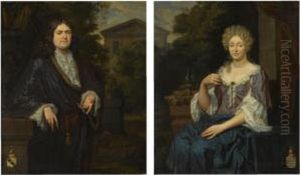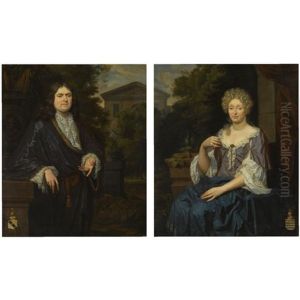Zacharias Webber The Younger Paintings
Zacharias Webber the Younger was a German Baroque painter, born in 1656 in Wurttemberg, now part of modern Germany. He was part of a family of artists and the son of Zacharias Webber the Elder, who was also a painter. Webber the Younger's family background provided a fertile environment for nurturing his artistic talents, and he likely received his initial training from his father before possibly traveling for further apprenticeship.
Although specific details of Webber the Younger's life and career are not as well-documented as those of some of his contemporaries, it is known that he worked primarily in the region of his birth. His oeuvre mainly consisted of religious-themed works and portraiture, which were common genres of the time. His style was influenced by the dramatic chiaroscuro and dynamic compositions characteristic of Baroque art, yet he also retained a certain regional idiosyncrasy that can be seen in the particular details and textures of his paintings.
The Baroque period, in which Webber the Younger worked, was marked by the Catholic Church's Counter-Reformation, which used art as a vehicle for expressing religious themes in a very direct and emotional way. Artists like Webber were tasked with creating works that not only showcased their technical skill but also inspired piety and devotion in the viewer. Webber's religious paintings would have been found in churches and private chapels, contributing to the spiritual life of their viewers.
Despite his efforts, Webber the Younger did not achieve the same level of fame as some of his contemporaries, such as Peter Paul Rubens or Rembrandt. Nevertheless, his works were respected in his region, and he maintained a steady career. His portraits provide a glimpse into the fashion and personalities of the local German aristocracy and bourgeoisie of the time.
Webber the Younger's death occurred in 1724, by which time the Baroque style was beginning to give way to Rococo in some regions. The exact impact of his work on subsequent generations of artists is difficult to trace, but he remains a part of the rich tapestry of Baroque art in Germany. His paintings are a testament to the period's artistic diversity and the skill of regional artists working outside the major European art centers of the time.

